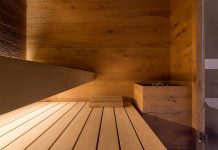Exista multe motive pentru care o iubesc pe Sarah. Printre ei este faptul ca vorbeste foarte bine franceza. S-ar putea sa credeti ca asta ar putea provoca conflicte, ceea ce cu afinitatea mea germana in ceea ce priveste limba si cultura, dar prefer sa vad lucrurile din unghiul in care aceasta diferenta de cunoastere nu face decat sa deschida usile. Prin urmare, dupa ce s-a stabilit ca Sarah ma va vizita a doua oara, am decis repede sa luam un weekend lung pentru a merge in unele locuri unde ar putea conduce drumul cu cunostintele sale de franceza.
Prima noastra destinatie a fost Strasbourg, capitala Alsacia din Franta. biginfohost1.skyrock.com Strasbourg se afla imediat pe granita germana si a fost de fapt german pentru cea mai mare parte a istoriei sale. StraBburg, si de fapt tot ElsaB, au fost o parte germano-vorbita a Sfantului Imperiu Roman pana cand Ludovic al XIV-lea a anexat-o Frantei in 1681. Faimoasa universitate a ramas inca germana, iar Goethe-ul german-german a studiat chiar acolo. Dupa revolutia franceza, limba a fost oarecum fortata modificata, iar zona a devenit mai franceza. Cu toate acestea, Bismarck a recucerit regiunea in 1871 si a reunificat-o ca parte a masivului Imperiu German. ventasdiversas.com Acesta a ramas german pana dupa Razboiul Mondial, unde Tratatul de la Versailles l-a restaurat Frantei, dar nu mult timp, de cand nazistii l-au capturat in 1940,
Avand in vedere ca a fost odata acasa la Goethe si la unul dintre ceilalti germani cei mai cunoscuti, Gutenberg, care a inventat presa tipografica aici in 1439, m-am intrebat cat de inca mai era orasul german. Am auzit o multime de germani pe strazi, dar cred ca cea mai mare parte era de la turisti. Cred ca dialectul local este, in esenta, germana, cu o influenta grea franceza, oarecum asemanator cu Letztebuergesch (luxemburgheza). Cu toate acestea, in aceste zile limba dominanta este clar franceza, iar germana este retrogradata intr-o secunda distincta, chiar deasupra limbii engleze.
Oricum, Strasbourg este un oras frumos, si atat de mult incat intreaga insula centrala este inscrisa pe lista Patrimoniului Mondial UNESCO. paxtoneclv770.over-blog.com Punctul inalt este probabil catedrala incredibila, inclusiv acest urias ceas astronomic. Dupa ce am intrat in hype, am cumparat un bilet special si am asteptat o ora buna pentru procesiunea sfintilor la jumatatea trecuta, am aflat ca cele mai frumoase parti sunt de fapt rupte chiar acum. Multumesc ca ne-ai spus asta in avans, baieti. Oricum – era inca misto si ne-am pregatit urcand pe turnul clopotnitei.
Iata o parte din vedere din sus. ssomgmt.ascd.org Intregul oras este incredibil. Adica, acest loc este una dintre capitalele UE, gazduind in special Consiliul Europei si Curtea Europeana a Drepturilor Omului. Turnul din spate face parte din spitalul civil, iar acele case frumoase mai mult in prim plan se afla pe malurile bolnavilor, care formeaza o insula pe care a fost fondata orasul. Rugati-va pentru gropi!
Mai multe dintre bolnavi si casele frumoase de langa ea. Super-german, nu? Glumesc, numai ca nu. www.bookmerken.de Aceasta zona este cunoscuta sub numele de Petite France … desi se pare ca acest nume provine din desemnarea germanilor medievali pentru prostituatele „franceze” care au locuit candva in aceasta zona.
Exista o multime de alte cladiri frumoase din oras, cum ar fi Kammerzellhaus, care dateaza din 1427. jaidenbsoy702.bravesites.com Acesta este chiar vizavi de Catedrala. Centru turistic, asa cum va puteti imagina.
De asemenea, pe Grande Ile („Marea insula”) se afla Eglise Saint-Thomas (Biserica Saint Thomas), biserica principala protestanta a orasului si oarecum unica in designul sau. Dupa cum se poate observa aici, Mozart si Albert Schweitzer au cantat pe acest organ chiar odata.
Casa pictata racoroasa gasita in timp ce ratacea pe Rue de l’Outre. livecoachlab2.wordpress.com
Am mers la doua muzee: muzeul de arta contemporana si cel ilustrat aici, Muzeul Alsacian. S-a concentrat mai ales pe viata rurala din Alsacia, care era de fapt destul de misto. Si intotdeauna imi place modul creativ prin care orasele multilingve se ocupa de muzee: multe, inclusiv acesta, ofera mici brosuri in diverse limbi pentru a lua cu tine prin muzeu in loc sa aiba pancarte mici peste tot. Oricum, ador modul in care barbatul din aceasta imagine isi selecteaza prada feminina. Ar trebui sa spunem destul de agresiv. reidzeqf057.theburnward.com
Am lasat afara un detaliu important inainte. De fapt, nu a fost important, dar oricum o voi mentiona. In drum spre Strasbourg, am avut o asteptare de doua ore pentru a prinde urmatorul nostru tren in Offenburg, un oras din sudul Germaniei, langa granita cu Franta. Ne-am plimbat in ciuda ploii si am vazut cea mai tare arhitectura. Este vorba despre „Apothecary Stag” de pe Fischmarkt („Piata de peste”, daca aveti nevoie intr-adevar de o traducere acolo). www.leningradskaya.org Nu-i rau.
Oricum, dupa doua zile la Strasbourg, am prins un tren care se indrepta spre nord spre Bruxelles, cunoscut sub denumirea de Bruxelles in franceza, Brussel in olandeza si Brussel in germana. Bruxelles este capitala Belgiei si in general considerata „capitala” UE, fiind acasa la mai multe institutii asociate decat orice alt oras (chiar si celelalte doua asa-numite capitale, Luxemburg si Strasbourg). De asemenea, Bruxelles-ul este de obicei considerat un oras de limba franceza, in ciuda faptului ca ea si intreaga natiune sunt oficial bilingve si, in mod traditional, orasul vorbea olandez. Althoug 60% din nordul Belgiei vorbeste inca flamand, ceea ce este cu adevarat aproximativ 98% acelasi lucru ca olandezul, regiunea capitala a Bruxelles-ului a cedat locul imperialismului cultural dominant al Frantei, iar astazi majoritatea alege limba franceza ca prima limba. tysonmazt614.yousher.com Orasul sustine inca bilingvitatea, si se pare ca exista unele cartiere dominate de olandezi, dar partile in care ne aflam erau foarte franceze, desi olandezul era de obicei o a doua alegere chiar dupa aceea. Oh, si apropo, aceasta este Catedrala. De fapt nu am avut mare sansa sa vedem interiorul, dar se pare ca Victor Hugo a sapat locul.
Acesta este Hotel de Ville / Stadhuis (primarie), amplasat pe Grand-Place / Grote Markt, o piata incredibil de frumoasa, a carei integralitate este un patrimoniu mondial. Dupa ce orasul a fost distrus de Ludovic al XIV-lea in 1695, aceasta piata a fost reconstruita, dar a fost lasata in mare parte neatinsa de atunci, o raritate pentru un oras atat de mare din aceasta parte a lumii. www.saajilo.com
Mai multe din Grand-Place. Cladirea centrala a fost casa breslei de bere. Cred ca este un moment bun pentru a mentiona doua dintre cele mai bune parti despre Belgia: napolitane si bere. La fel ca data trecuta cand am fost in Belgia, am incercat cat mai multe tipuri diferite de bere, care este rezonabila si este de necrezut cati dintre ei au gust fantastic. Adica, ador berea germana si cred ca berile belgiene sunt si mai bune. reallifenetwork9.huicopper.com Nebun. Si atunci sunt gofrele! Ce tara.
And still more! To the right is a local history museum in the former Maison du Roi (King’s House) / Broodhuis (Breadhouse). Although we again had multilingual booklets, Sarah and I had more fun trying to decipher the French and Dutch printed everywhere. See, Sarah speaks very good French, but not with perfect fluency, and I can read a modicum of Dutch due to its similarity to German. www.bausch.co.nz With our combined knowledge we were actually able to understand a good deal. At the huge art museum we played a game of seeing who could translate the names of the works first (although sometimes the names were somewhat or even vastly different).
Here on the Kolenmarkt you can see one of the many comic book murals on the sides of buildings across town. You will also note some large stacks of rainbow balloons: turns out we arrived in Brussels just in time for a massive Pride parade. That was cool. easycoachtech4.fotosdefrases.com We kept running into the parade as it traversed the town.
Anyway, back to the raw tourism: here’s a big clock next to the national library.
Behind the national library is this nice view of the hyper-Art Nouveau Old England building and the Place Royale/Koningsplein (Royal Square). The royal palace is just around the corner, and the Palace of Justice farther down the street to the right. There’s a lot of palaces here. emilianouucv700.lowescouponn.com And churches. But hey, this is Europe, what else would you expect?
After failing to get into the Cathedral, we decided to go to the Eglise Notre Dame du Sablon (Church of Our Lady of Sablon), not too far away. Cool place.
Just outside the church is this little garden. I have no idea who these two men are. postheaven.net
And then we walked to the Palace of Justice, from whose steps I took this picture. I believe that that is the Notre Dame de la Chapelle on the far left, a monument for WWII in the foreground-left, and the spire of the city hall in the center-right. Just out of the picture on the left was a van selling waffles. Yes, they have waffle trucks, just like ice cream trucks in the States. And in the center of this picture, far in the distance in the horizon, hard to see but ever yet there, is the Atomium, a huge monument build for the Expo ’58. ecolovebox9.edublogs.org It’s something of a big deal and a symbol of the city.
We also headed a bit to the south of the city to a nice neighborhood known for its many Art Nouveau houses. The most famous were constructed by Victor Horta; four of his buildings are today World Heritage Sites. Three of them are very near to each other, so of course we had to check them out. His own former home and studio is now a museum, and although it was expensive and partially under construction (I am cursed), it was cool. mrloveinfo8.cavandoragh.org
Another of Horta’s Heritage Site houses, the Hotel Tassel. Like all of these beautiful buildings other than the museum, they are private property and not open for the public. (For the record, a third Brussels Heritage Site, the Stoclet Palace, built by Josef Hoffmann, was even farther out of the way and quite inaccessible to the public, so despite my obsession, I opted to pass on trekking to its door.) I can’t help but find the giant ugly dumpster to be something of an insult. “Oh, was that one of the most famous and beautiful buildings in Belgium? Well, I’ll just park my dumpster there for a while; it’s not like anyone will notice. www.kaskus.co.id “
Not a World Heritage Site, but it has a cooler facade than some of the ones that are: this is the Maison Ciamberlani, also not far away and designed by Albert Ciamberlani.
On Sunday, on our long way back to Frankfurt, we had to transfer in Koln. We had less than half an hour there, but I couldn’t pass up the opportunity to make the most of it. Look closely at this picture. (Actually, you don’t even need to look closely; I cropped this screenshot from wikimapia to make my point obvious. supercoachone5.bravesites.com ) See, Koln is one of those funny cities where the planners made the awkward decision of putting the Hauptbahnhof (central train station) literally next door to the city’s oldest and most famous site, the Kolner Dom (cathedral). This is generally considered foolhardy (even the Nazis had planned to move the station to a more convenient location on the edge of the city center, as is the case in most European cities), but in this case it worked to my advantage. I met up with a friend who lives in town and we walked across the square and showed Sarah the quick tour of the Dom. Oh, Koln. Our last train followed the beautiful route along the Upper Middle Rhine Valley (yet another World Heritage Site, as if the Dom and Horta wasn’t enough for one day), but sadly it was too dark to see most of the castles overlooking the river valley. I guess there’s a limit to how much awesome you can have in one day, no matter how hard you try.
Thanks to Sarah.




















